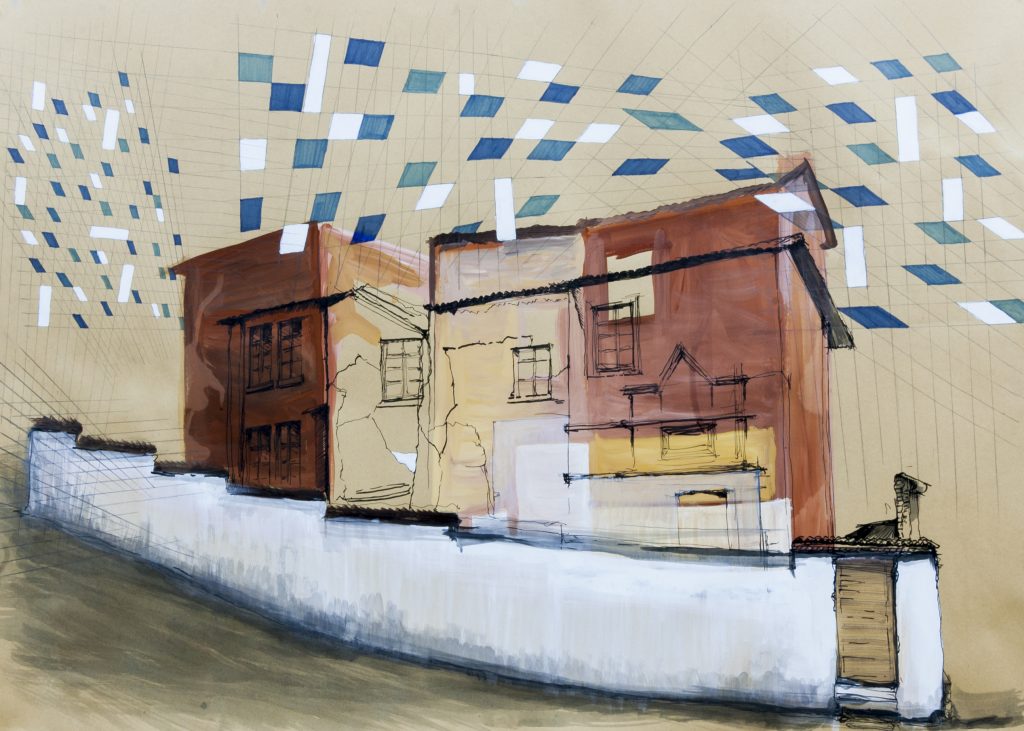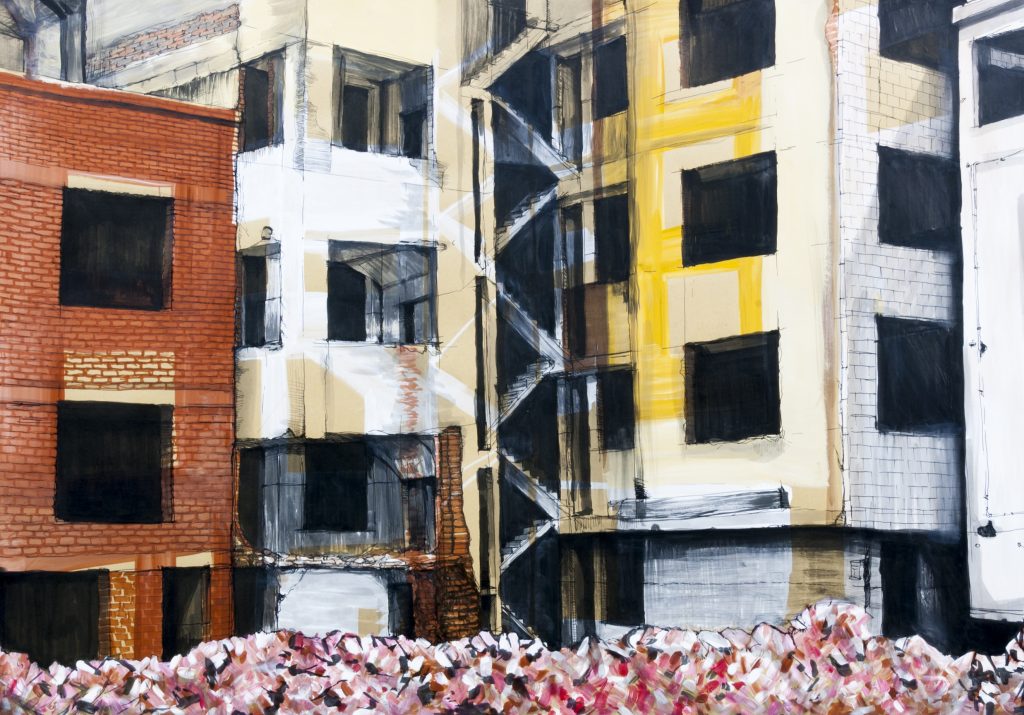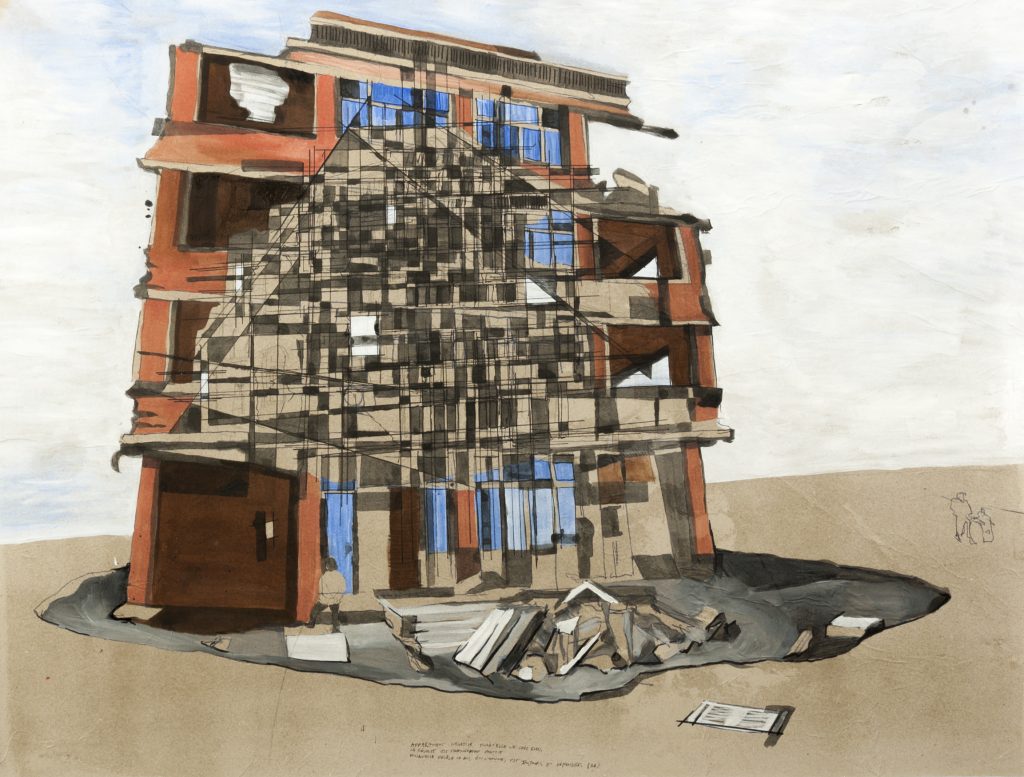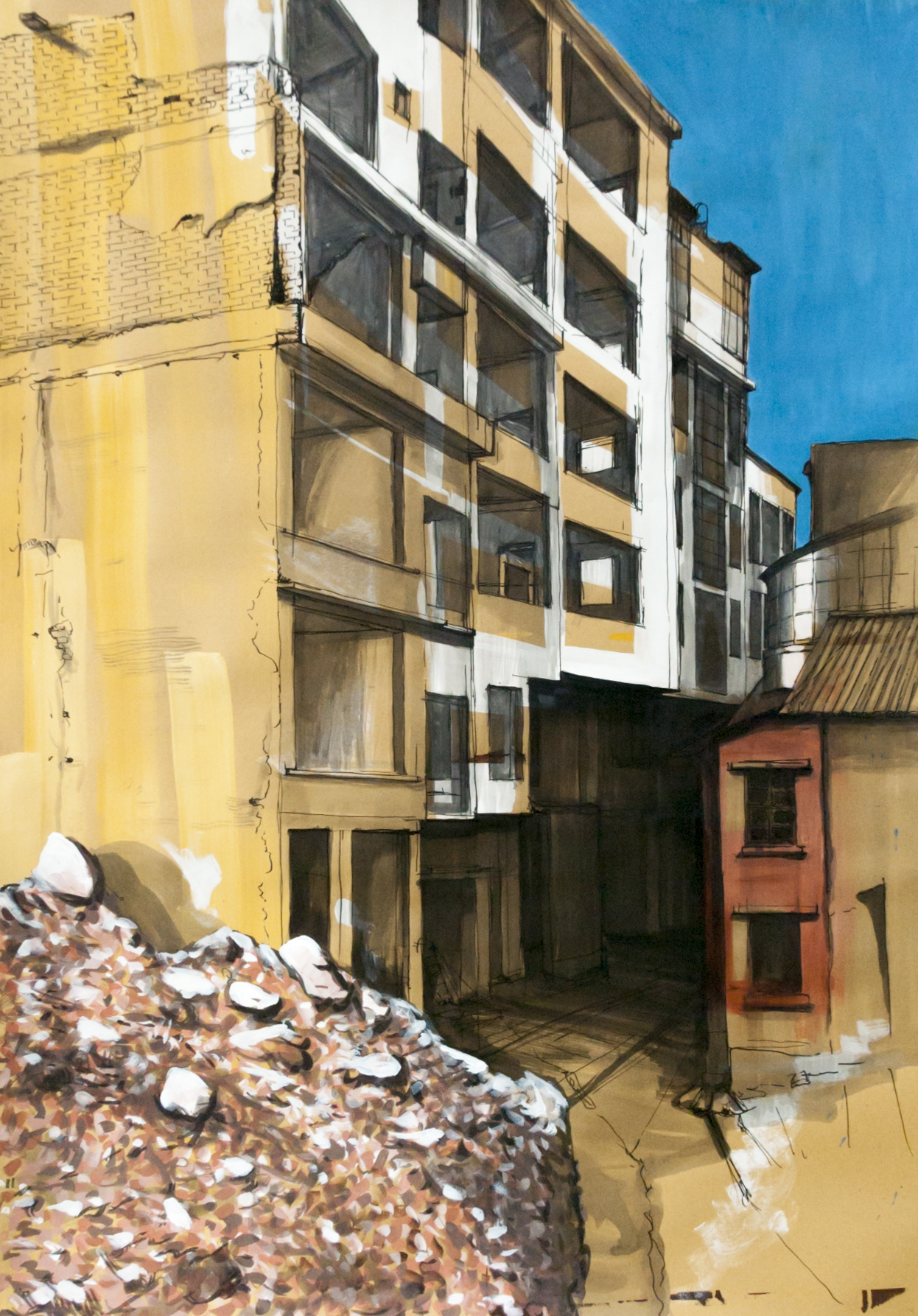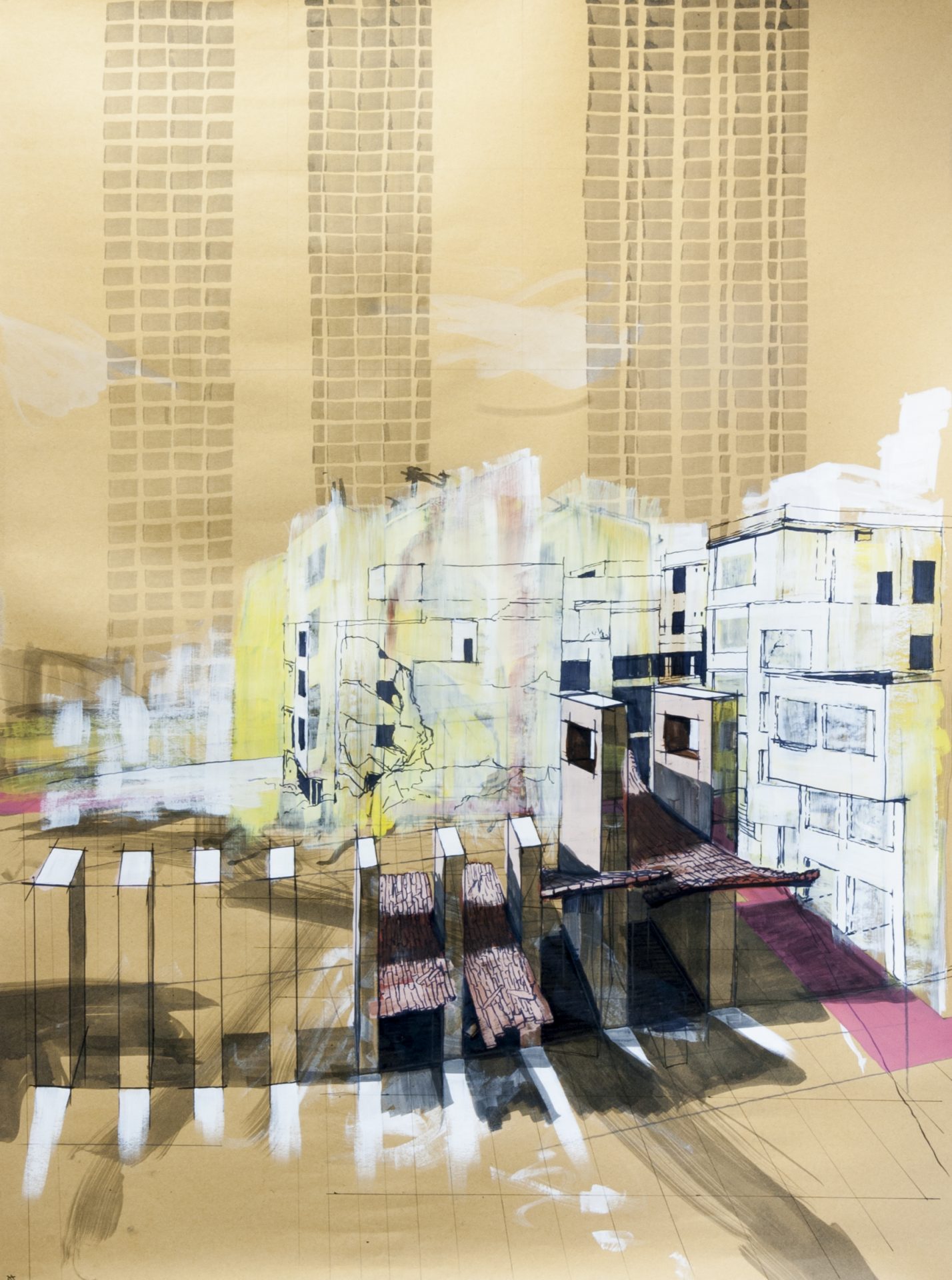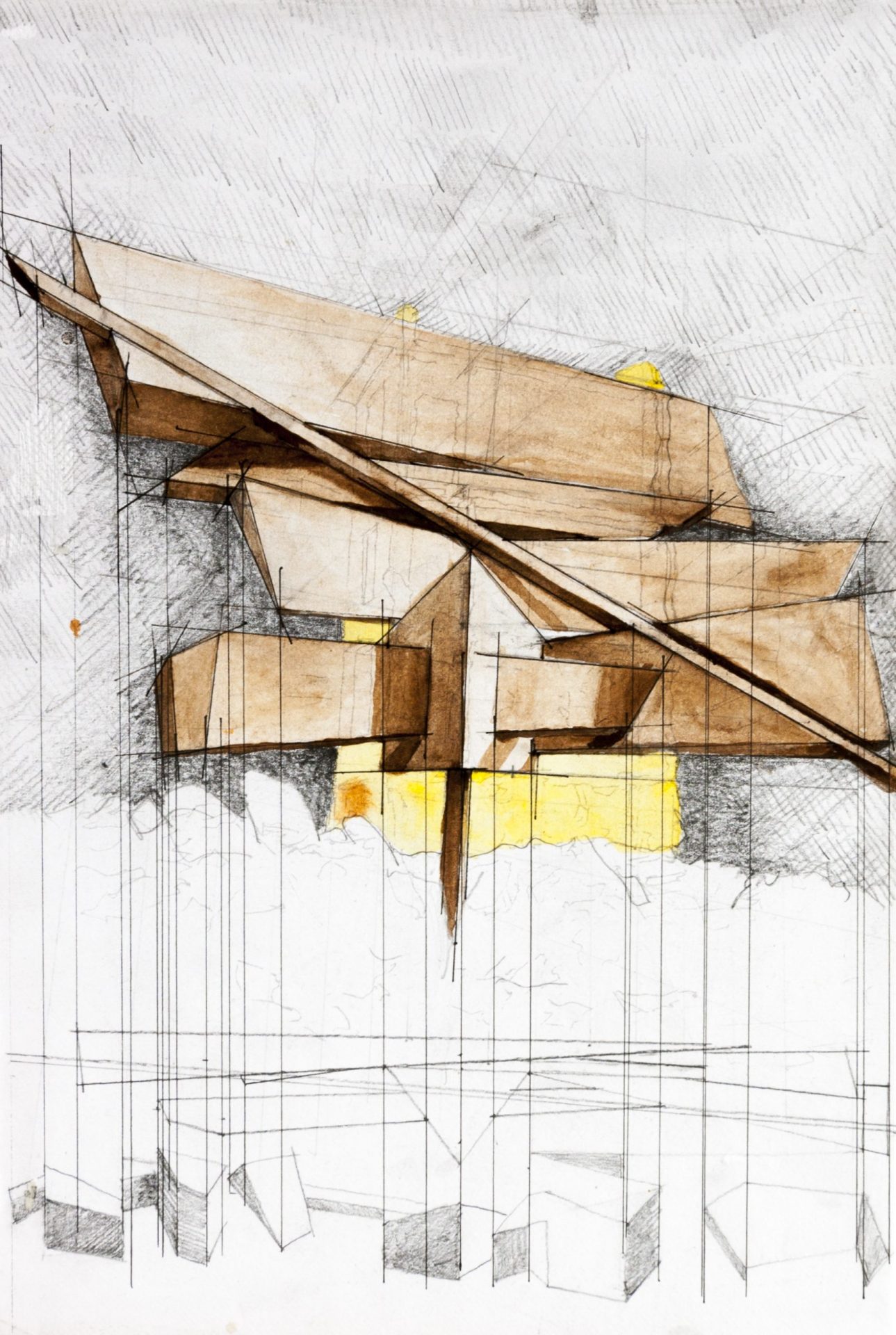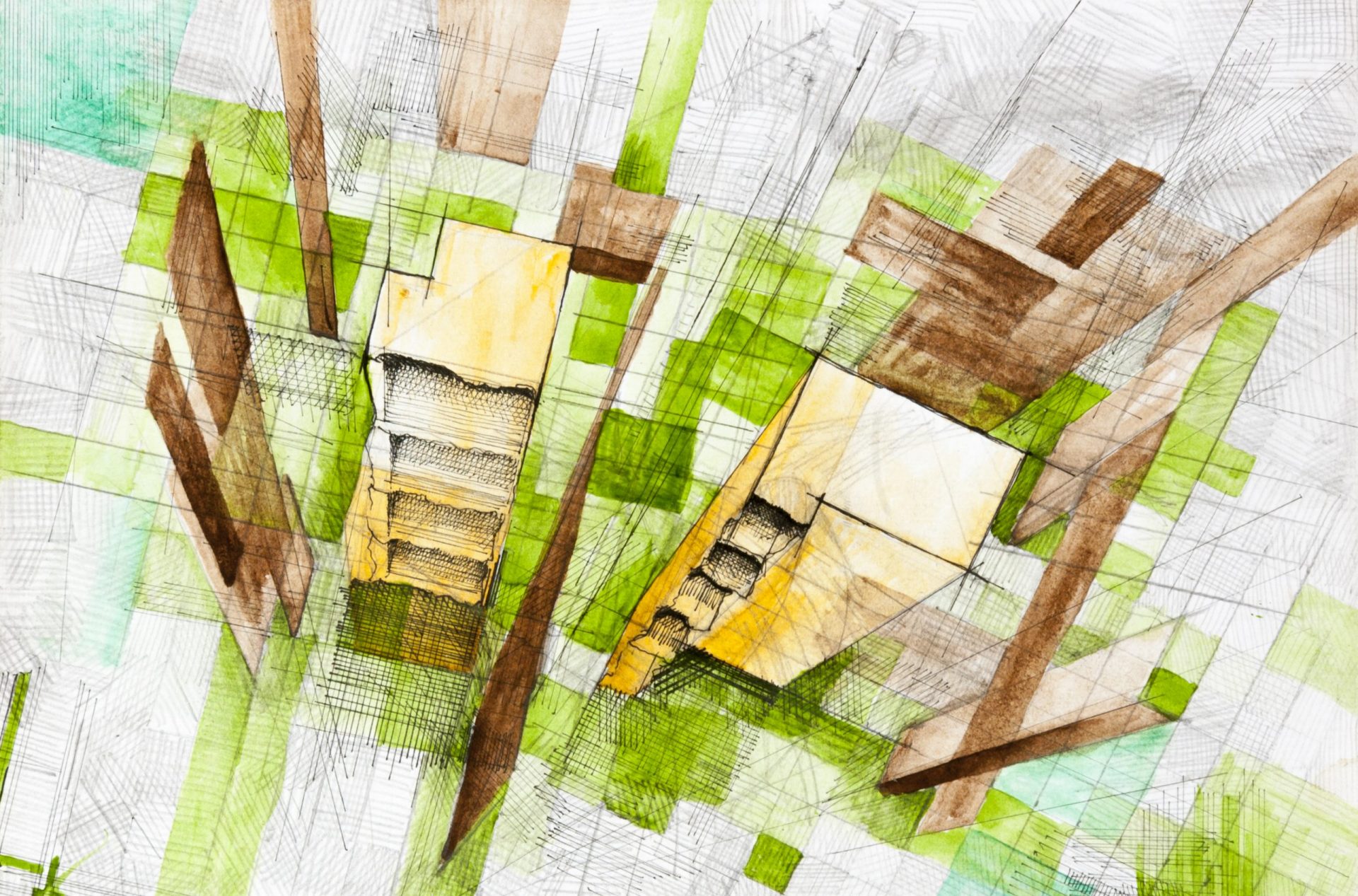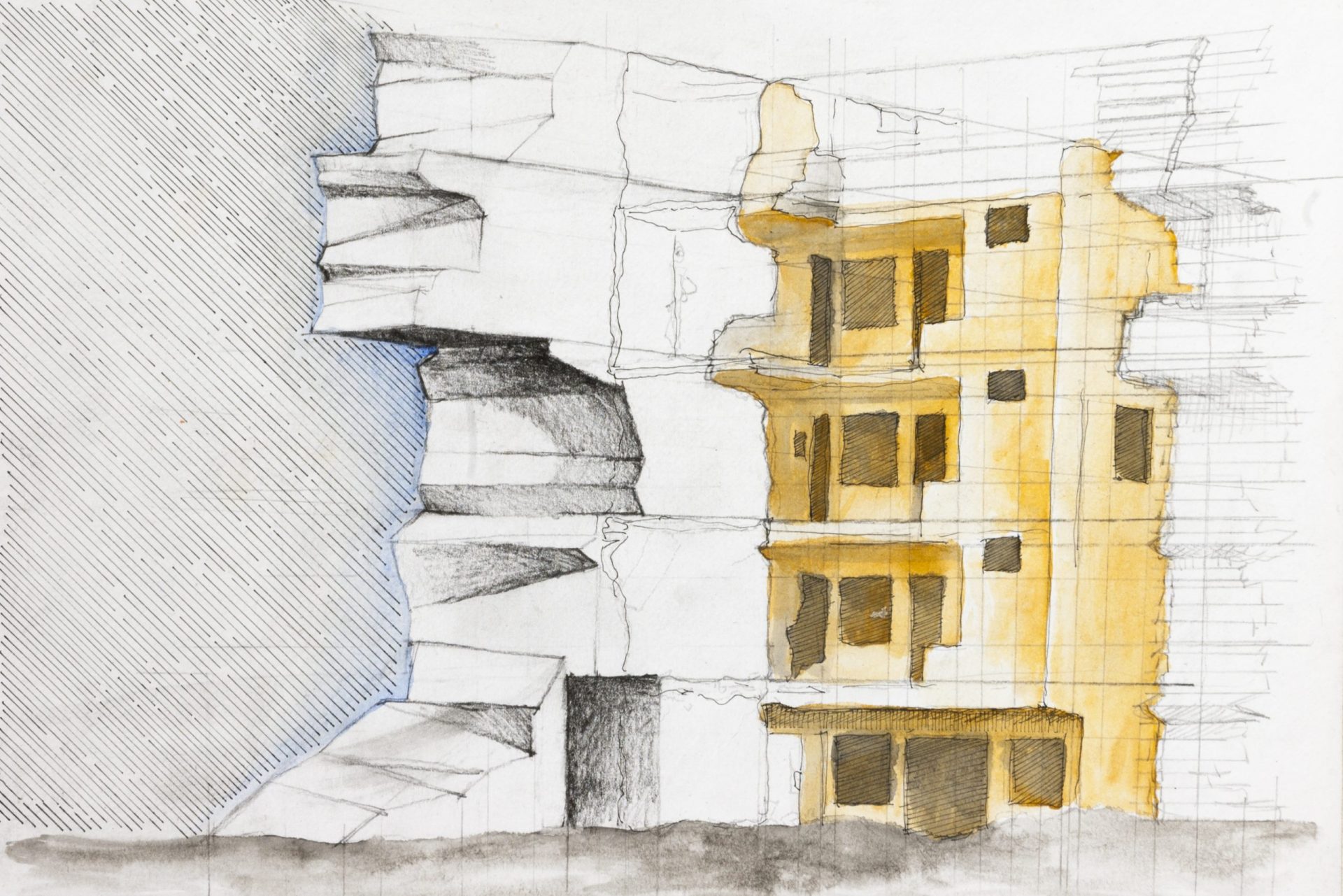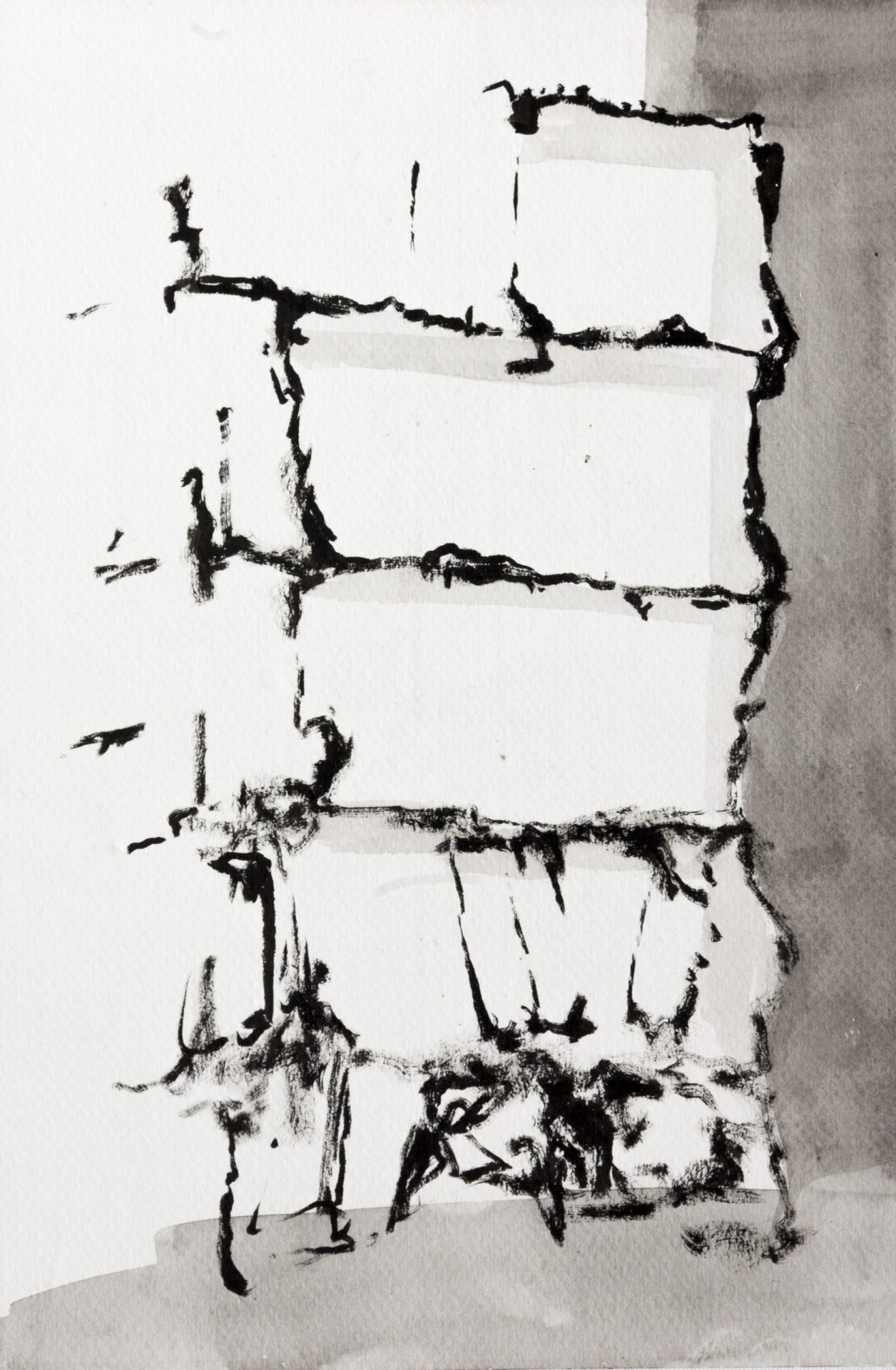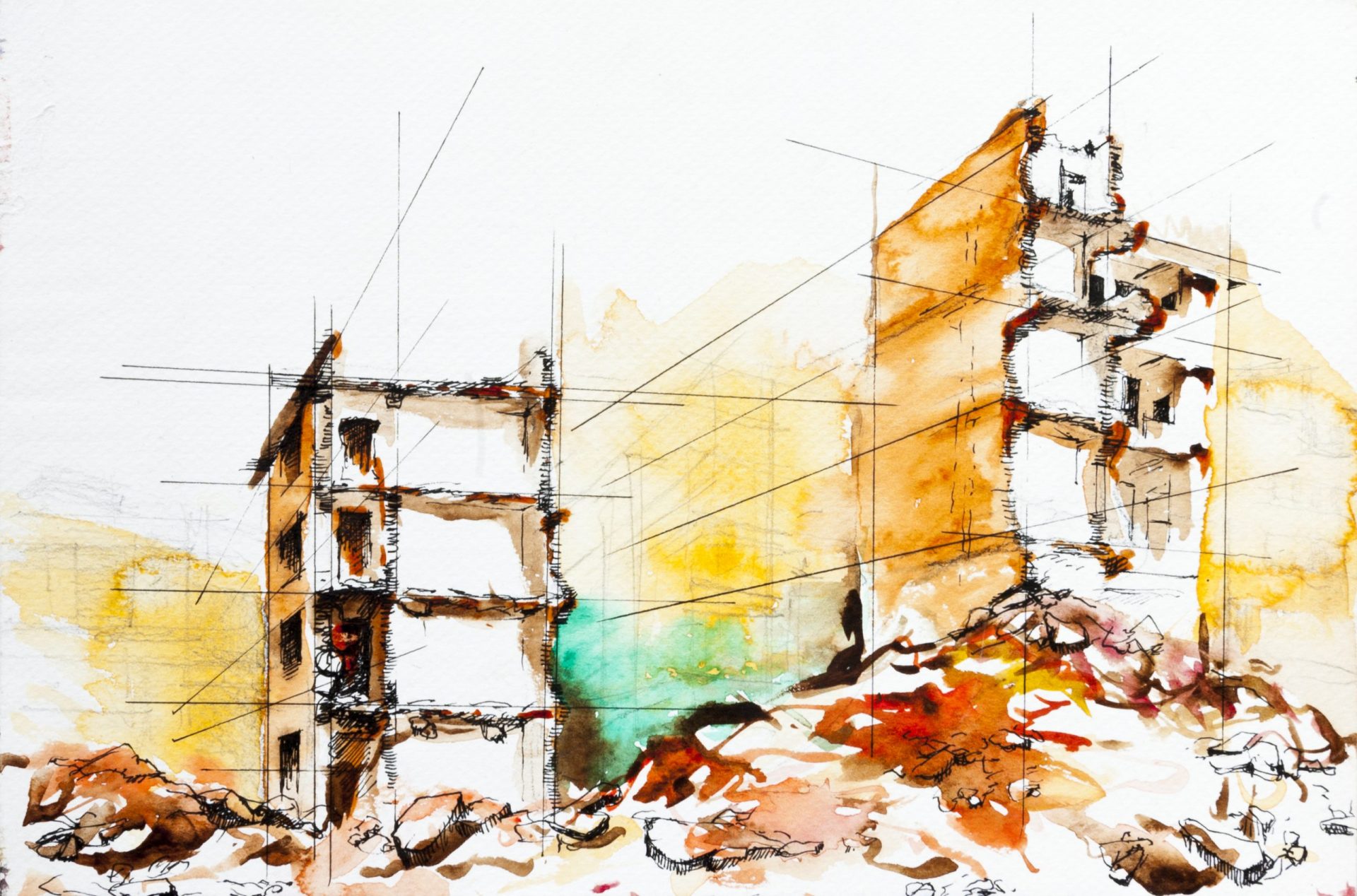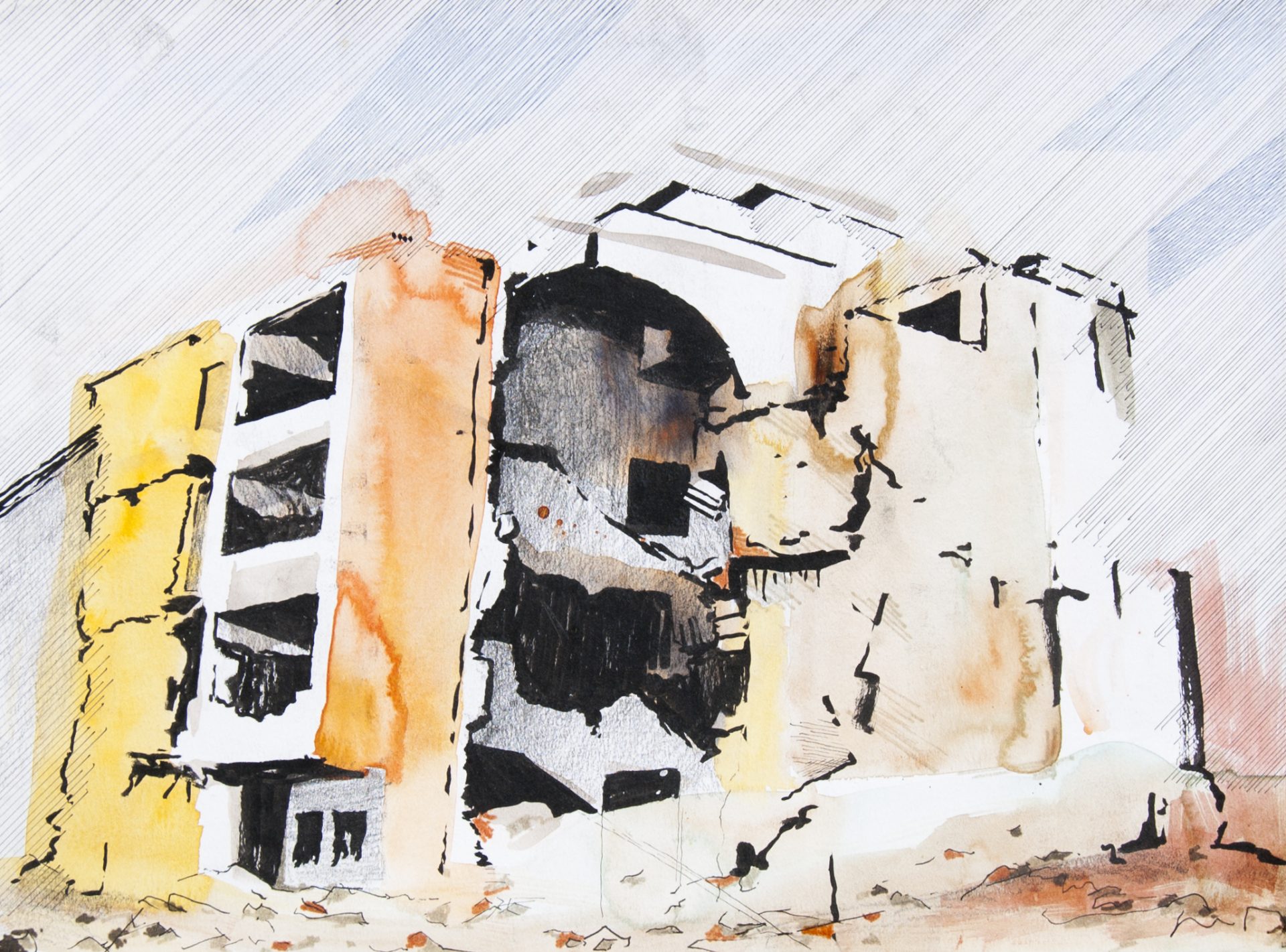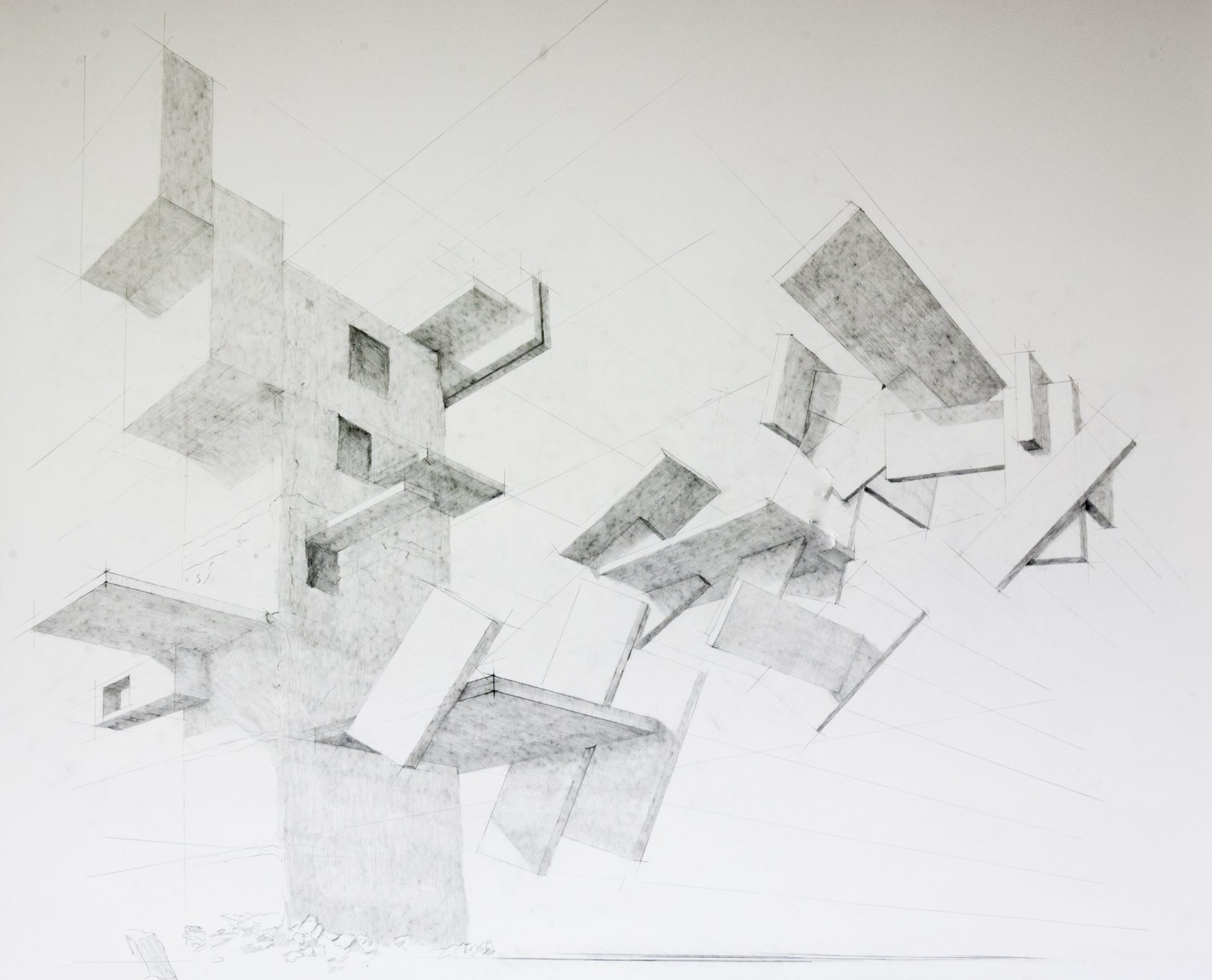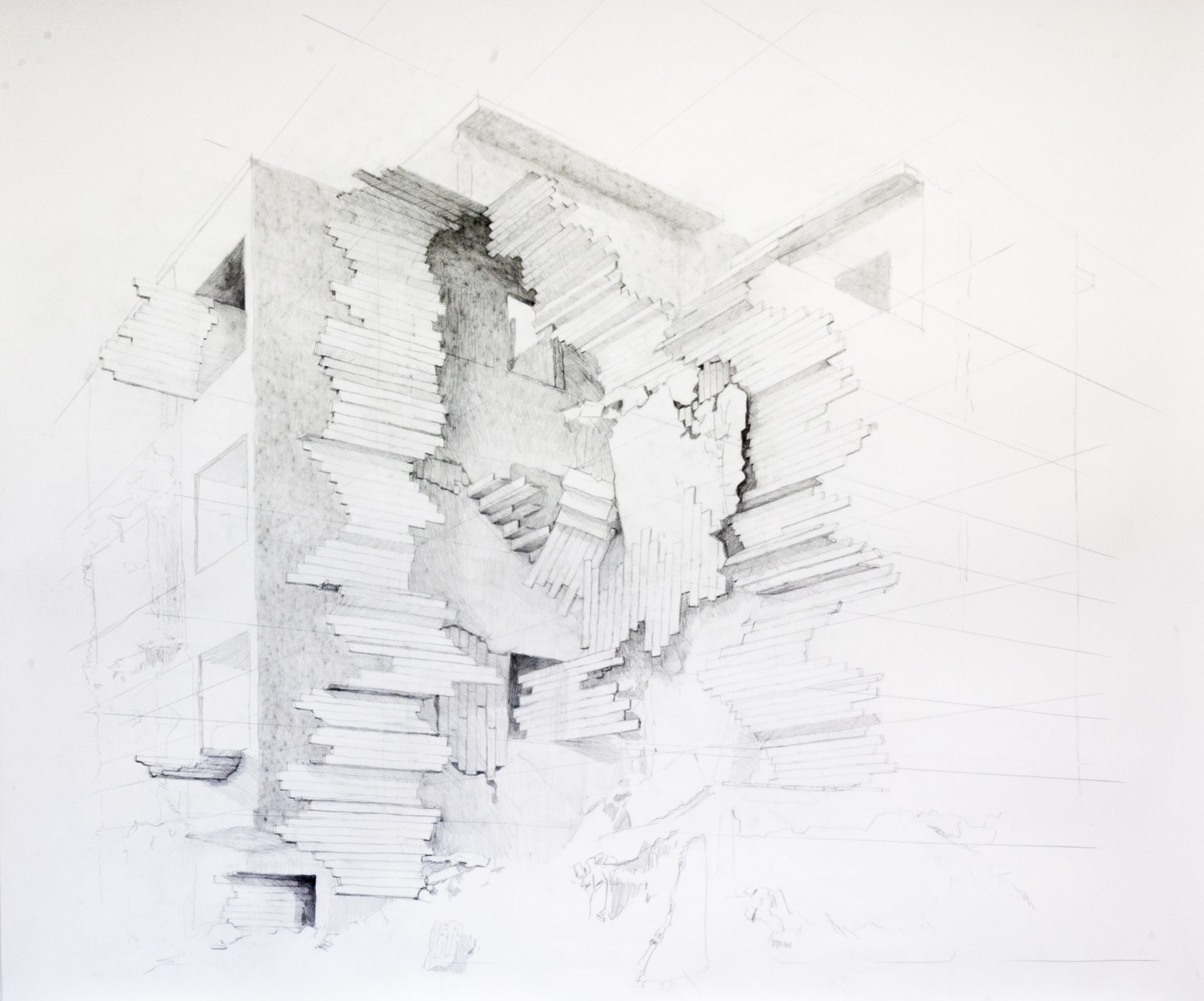REGENERATION
Free Spaces begin with the status quo of the villages and extrapolate a definition of radical architecture to re-establish connections between the buildings, spaces, and residents, cement their unity, and re-densify the urban fabric with spaces and opportunities for villagers and migrants to repopulate and reactivate them.
Free Spaces are architectural, generative scars that grow over damaged building tissue to create new forms and spaces, which continue to grow and expand or mutate, materially composed of the detritus of the surrounding damaged buildings (brick, cinder block, concrete mix, stone, wood, glass, plastic, aluminum, fiberglass, cable, wiring, etc.). These tendrils of architecture reach out towards other buildings, whose own damaged structures are also in a process of regeneration. New heterarchical spaces, irregular and without prescribed or predetermined programs of use, are a localized architectural reaction to unique and specific conditions. They allow for the regeneration of the urban tissue of the village using the very material of the torn structures. Once the healing process has begun, cells begin to regenerate and multiply, moving about through newly formed capillaries, vessels, and systems connecting the village, bring color and life back to structures and communities which had been severed and left to rot away.
